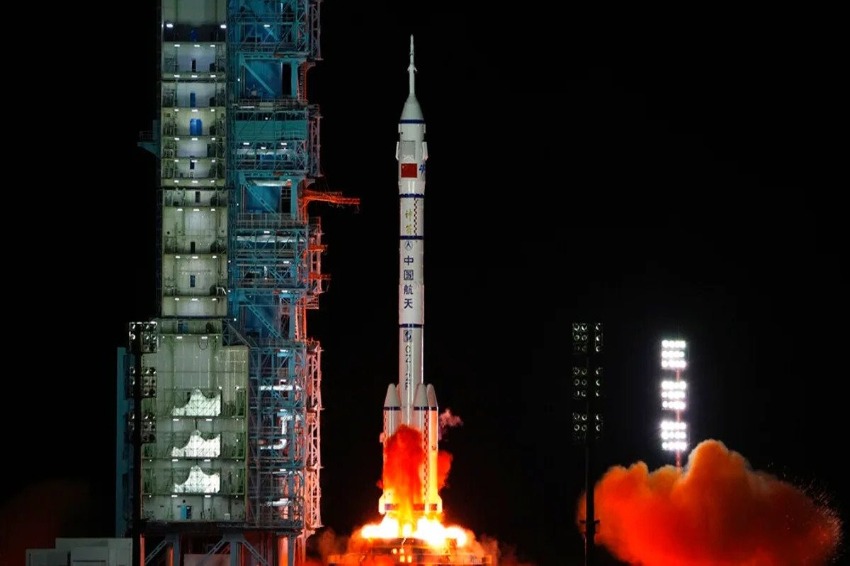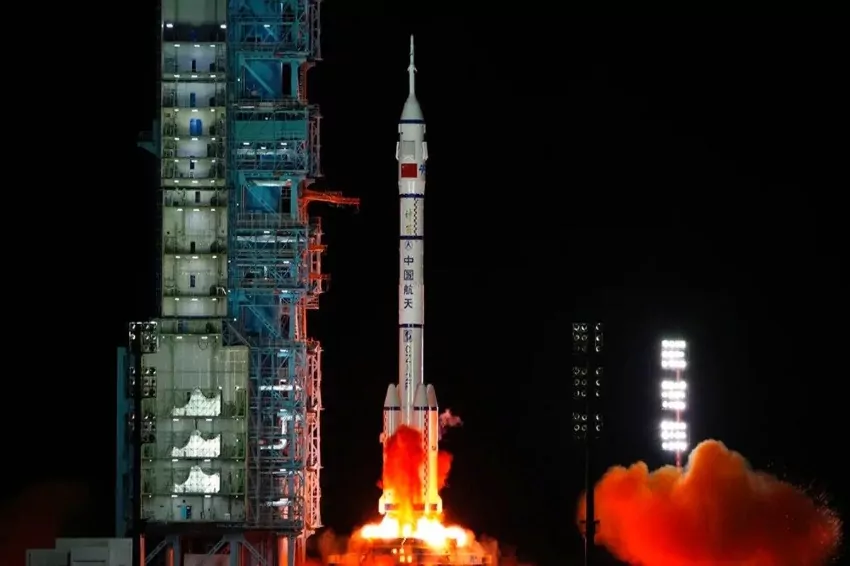

(c) India Today
On Friday, Chinese state media CCTV stated that the country has successfully launched a pilot reusable spacecraft using its Long March-2F carrier rocket.
According to CCTV, the unidentified spacecraft that was launched from China’s Jiuquan Satellite Launch Center will return to a planned landing site after operating in orbit for some time in order to provide technical validations for reuses. The launch took place at China’s Jiuquan Satellite Launch Center.
In July, China successfully launched a spacecraft that returned to Earth on the same day after traveling beyond the edge of the atmosphere. The country claimed this marked a significant step forward in its efforts to create reusable space transportation technology.
According to reports from China’s state-run news agency Xinhua, a Long March 2F rocket that was carrying a “test spacecraft” successfully launched from Jiuquan Satellite Launch Center in the Gobi Desert on Thursday (August 4; August 5 Beijing time).
During the time that the test spacecraft is in orbit before returning to the scheduled landing site in China, reusable and in-orbit service technology verification will be carried out as planned to provide technical support for the peaceful use of space, according to a report that was published by Xinhua (opens in a new tab) (in Chinese; translation by Google).
A reusable test spacecraft was also launched by China in September of 2020, under the same shroud of secrecy as the previous launch. According to SpaceNews, the vehicle in question, which may or may not be the same one that launched on Thursday, remained airborne for a period of two days, during which time it discharged a small payload into orbit, before descending to make a touchdown in China.
As a point of reference, the X-37B space plane has been in orbit around the Earth for more than 800 days as part of its most recent mystery mission, which is the sixth for the X-37B program. It is said that the Space Force’s fleet includes two of the space planes that were produced by Boeing and measure 29 feet (8.8 meters) in length.
The launch of the Jiuquan satellite was one of many space-related activities that took place on a very active day. Six rockets were launched on Thursday, beginning with Rocket Lab’s liftoff of a surveillance satellite for the United States National Reconnaissance Office at one in the morning Eastern Daylight Time (EDT) (0500 GMT).
Also on Thursday, a missile-warning satellite for the Space Force was launched by a United Launch Alliance Atlas V rocket; Blue Origin sent six people to suborbital space; China launched the TECIS 1 Earth-observation satellite; and South Korea’s Danuri moon probe took off atop a SpaceX Falcon 9 rocket. All of these missions took place simultaneously.
The European Union and Singapore agreed to a transformative Digital Trade Agreement which serves to deepen their economic relations through…
If you are planning to fly via Malaysian Airlines or booked any of your travel through India or any of…
Music is a strongest medium to connect ourselves with the soul and any individual around the world because the emotion…
During the speech at the Financing Asia's Transition Conference the minister of environment in Malaysia called on ASEAN nations to…
The 61st Baeksang Arts Awards ceremony took place on 5 May 2025 at Seoul in South Korea and this glittering…
The fifth prisoner exchange took place on 6 May 2025 between Russia and Ukraine involving 205 prisoners and it is…
This website uses cookies.
Read More